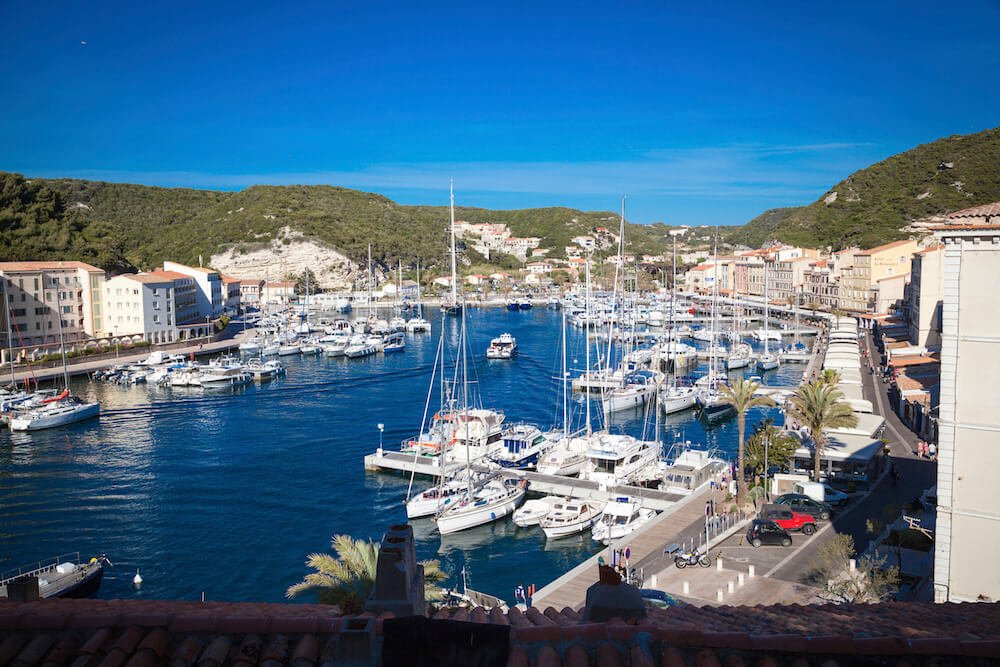The Corsica & Sardinia Yacht Vacation

FOR FOODIES ONLY:
Corsica: Despite living on an island endowed with a large coastal area, Corsicans have never been a population of fishermen. Throughout their history, the multiple waves of invaders, malaria (in the olden days) and other threats have systematically discouraged them from staying on the coast. Corsicans have thus gotten used to live inland and their food is mostly inspired by this inland influence. Still, you will nowadays find tasty fresh fish and seafood readily available: wake up early one morning and buy a massive seabream or a fresh rock lobster from one of the many fish markets in the main cities. Our advice to cook fish and seafood: they are so fresh that you would spoil them with elaborate preparation.
Sardinia: In the same manner, since Sardinia’s coast has also been victim to invasion, i.e. the Phoenicians, the Carthaginians, the Romans, etc., the Sardinian people found refuge in the mountains. Therefore, the traditional foods of Sardinia were always more influenced by the land than the sea. Today, much has changed and now seafood has been embraced by Sardinians, no longer having to fear invaders or pirates. Spicy fish soups called Burrida and Cassola, along with lobsters, crabs, anchovies, squid, clams and fresh sardines with Sardinians. Favorite Sardinian pasta dishes include: Spaghetti con Bottarga made with dried gray mullet roe shaved on top, Malloreddus is a gnocchi style pasta flavored with saffron and served with a tomato sauce. Culingiones are round ravioli stuffed with spinach and cheese. The Sardinian interior produces some of the best lamb in all of Italy and it is known for being very lean. Sardinians enjoy their meats roasted and suckling pig or kidis a favorite roasted outdoors over aromatic woods. Abbamele is a honey-based product made in Sardinia. It is also sometimes called “abbattu”, “abazu” or “honey sapa Sardinian wines have been influenced by the successive waves of invaders, with the Spanish leaving the most indelible mark.
The full-bodied red Cannonau is the wine of choice when serving Sardinian lamb. Monica di Cagliari (DOC) can be found in dry well-aged varieties, as well as, a sweet dessert wine, known as, Liquoroso Dolce. Two well-known Sardinian white wines are Vernaccia di Oristano (DOC), a golden dry wine that is drunk with local fish and lobster and Vermentino di Gallura (DOCG), also good with seafood. Spirits include the aperitivo, Liquoroso Secco (made from the Monica grape) and the Myrtle flavored, Mirto. There are also various types of Grappa and Fil’e Ferru, a Sardinian Aquavitae, and other aperitifs with infusions of citrus fruits such as Limoncino and Arangiu.
Due to their geographical proximity we have grouped these two Mediterranean islands together although Corsica (La Corse) however is definitively French, and an integral part of France while Sardinia (Sardegna) is an integral part of Italy. Different islands, different cultures and different experiences.
A QUICK OVERVIEW:
The islands are mostly mountainous rocky and wind-blown on the Western side. The smart visitor will take advantage of the dichotomy of small picturesque towns and villages in the mountains where the locals hang out, as opposed to the smart, modern yachting facilities and with its stunning cruising grounds, designer shopping and night-life in coastal locations. ing and nightlife.
SLIGHTLY MORE IN-DEPTH:
You can explore either one or both islands during your charter. The yachting and sailing action is mainly on the East coast of both islands which is more protected from the prevailing winds. You can visit the islands as part of a longer charter itinerary or they can be a stand-alone destination
Bareboat charterers prefer the NE reaches of Corsica around Macinaggio since there are some close-by islands like Isola di Capriaia (15 N. miles) and the island of Elba (another 18N miles)
Corsica’s rugged and mountainous landscapes with picture-perfect little ports and towns, has become the darling of the yachting community and great little recently built marinas and dockage facilities all along the east and south coast of the island like Porto Vecchio and Bonifacio
Sardinia’s Costa Smeralda in the north, especially Porto Cervo, with its combination of luxurious shopping, nightlife and gourmet dining also attracts it share of the rich and famous and is a popular yachting destination. The adjacent Maddalena archipelago is popular with visiting yachtsmen. Sardinia also has some great luxury facilities in Porto Cervo and Olbia that attract the mega-yacht crowd.
ACCESS:
There are different ways to access the two islands:
